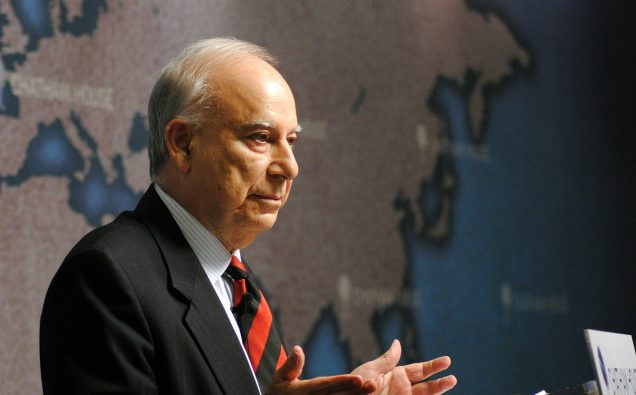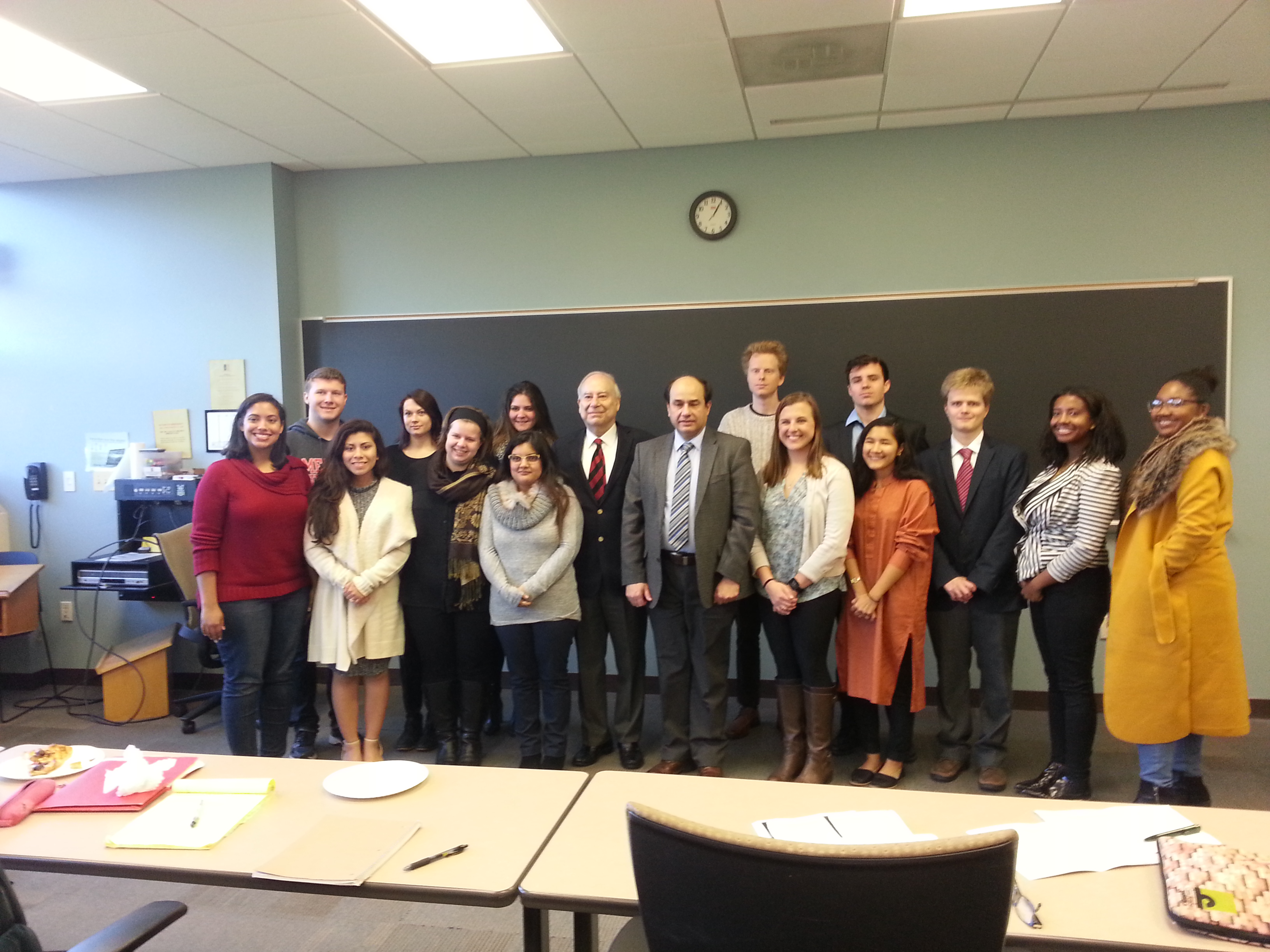
Image Credit: Chatham House/Wikimedia Commons
When Sushmita Kamboj joined my World of Islam class as a student two years ago, she spoke of the vast distances between Islam and Hinduism in India. Growing up in Yamunanagar, about three hours north of New Delhi, she recalls, “In school, every joke was about a Pakistani. The news constantly showed Pakistan and its people as the enemy. We would go to the border between India-Pakistan and shout to the other side during parades. In that environment, it is easy to believe that one is indeed very different.”
This summer she became instrumental in closing those gaps.
She had gone home taking a copy of my book Journey into Europe: Islam, Immigration, and Identity with her. It was well received: “For me, the most glorious moment was when I gave my father Journey into Europe, and saw him not only read it but also later in the day share bits from the book with family and friends. My father has a knack for sharing what he reads in books. He shared with fascination Islamic contributions to Muslim society and his friends listened wide-eyed and struck with wonder. Now, this is a rare sight in a Hindu household and for me, this epitomizes Professor Ahmed’s influence and impact.”
Sushmita saw the impact of building bridges extend beyond her family, noting, “After sharing Journey into Europe, I witnessed many family friends also begin a very positive conversation about Muslim society. Suddenly, the negative connotations attached to Muslim societies began to disappear.”
She had done it: this young student had built bridges on the basis of knowledge and scholarship.
Sushmita’s commitment to the pursuit of knowledge was evident when she wrote to me from home during her summer holiday in 2017 and insisted on returning to school early to help with my book, Journey into Europe. In her email, she said, “In light of the recent atrocities around the world, I have thought about your confident and restless nature that believes in changing whatever you do not like in this world. The philosophy of self-creation and self-assertion that you practice also reminds me of Iqbal’s philosophy of khudi. I remember learning about it from my grandfather, who himself embodied that philosophy and shared it as his last words to me.”
She returned with impressive energy and commitment to scholarship: she assisted with the book, my forthcoming play and peace-building exercises. She also wrote a strong piece about the Quaid-i-Azam and Mahatma Gandhi titled, “Building Bridges with the Other (ed),” which was published in the Huffington Post.
During my conversations with Sushmita, I became particularly intrigued by her ancestral history as a member of the Kamboj of India, which she often spoke about with great enthusiasm. I advised her to dig deeper into her tribal lineage and encouraged her to pursue a study of the Kamboj through anthropology. Initially, she was hesitant. However, as she worked on my research team, she began to see the discipline ideally suited her interest in studying South Asia. She additionally took great interest in my work on the Pukhtun people of Khyber Pakhtunkhwa, which helped her build the necessary confidence to pursue a study of her own heritage.

Dr. Akbar Ahmed with students of Islamic History Class, Sushmita Kamboj is in the first row, 4th from left
Sushmita soon began to focus her research interests on the modern day descendants — kom, kamboh, and kamboj people — of the ancient Kambojas spread across Afghanistan, Pakistan and India. These descendants still carry remnants of their original name and ancestral occupations, but live separated by national boundaries, linguistic traditions, and religious identities. By studying them, Sushmita seeks to help in identifying their shared features and cultural connections. I was impressed by how she quickly began to zero in on what I consider to be a viable topic for further anthropological study, and I encouraged her excitement in and dedication to uncovering the history of this tribe and how political divisions have altered their tribal customs throughout history.
I asked her to explain why this project is so meaningful to her. She replied, “It has always pained me as a lover of history that no clear picture emerges of the social history or development of the people across the territories of eastern Afghanistan to New Delhi and beyond. There is no other populated region in the world in the recorded times in respect to which we have to mark so astonishing a gap in knowledge.”
She was inspired in her studies by the love of reading shared by her grandfather and father, of whom she writes: “One of my most vivid childhood memories is of captivating conversations with my father about the complexities and charms of South Asian history. He shared little gems of knowledge every day — while watching a movie, while reading the news or while passing by an old building. By the time I was a teenager, I had become a voracious reader like him. All this helped me shape my own interest and catalyzed my desire to delve into academia.”
Sushmita also reflected on the shaping of her academic interests: “Though I had passion for academia, I needed to further develop my understanding and build confidence in my ideas. I feel that my work with Professor Ahmed allowed me to hone my abilities. It gave me direction, purpose and confidence which was critical for my acceptance in a prestigious program such as the one in University of Oxford. Professor Ahmed showed me where to look but never compelled me on what to see; it is because of this he is my guru.”
When I asked her about how her interest in bridge building emerged, she responded, “My interest in bridge building was inspired by Professor Ahmed. After seeing him work tirelessly to promote better understanding among people of different faiths, I began to see the value in it myself.” She added, “I knew very little about Islam even though I had many Muslims students in my school. It was in college after seeing Muslims from all over the world and meeting Prof. Ahmed that I got to learn about Islam. My misconceptions about the religion began to disappear.”
After she applied to do an MA in Anthropology at Oxford University, I waited anxiously for the official response until she sent this breathless message:
“I must talk to you. Once I stop shaking. It is only because of you. Only because of you! Thank you so much, this means so much. It is really heartwarming to have your support both in my academic pursuits and outside the classroom in my career.”
Sushmita promised, “Your students will work for a more prosperous and united sub-continent since you have lit a fire that shall not stop. I hope for a more stable and strong Pakistan as well.”
Sushmita paid me the greatest compliment a teacher can receive, “I find myself extremely lucky to have a mentor-guru like Professor Ahmed. If only everyone could have a teacher like you.”
Sushmita is too generous: she already had the fire, I merely helped her see it. In her, I see the birth of a brilliant scholar who will contribute to knowledge of the Kamboj, which will help build bridges between Afghanistan, Pakistan, and India.

















